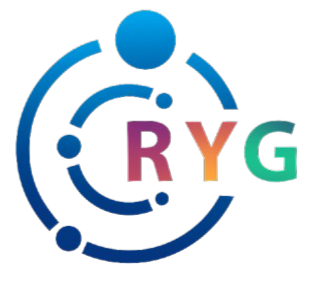1. Introduction: From Perception to Emotion—Unveiling the Psychological Impact of Visual Patterns
Our visual environment is filled with an array of patterns—repeating shapes, intricate textures, and contrasting colors—that do more than just catch our eye. As explored in the foundational article How Visual Patterns Shape Our Perceptions, these patterns influence not only what we see but also how we feel. Beyond recognition, visual patterns have a profound, often subconscious, impact on our emotional responses, shaping our mood, comfort, and even our behaviors.
2. The Science of Visual Patterns and Emotional Responses
Research in cognitive neuroscience reveals that our brain processes visual patterns at a predominantly subconscious level. When we encounter a pattern—be it a floral motif, a geometric grid, or a chaotic scribble—our visual cortex rapidly recognizes the structure, activating neural pathways that are often linked to emotional centers in the brain such as the amygdala and the limbic system.
For example, symmetrical and harmonious patterns tend to activate neural circuits associated with calmness and safety, while irregular or chaotic arrangements can trigger alertness or unease. A study published in the Journal of Neuroscience (2018) demonstrated that simple, repetitive patterns elicit a calming response, whereas complex, unpredictable designs heighten arousal levels.
| Pattern Type | Emotional Response |
|---|---|
| Symmetrical Geometric | Calm, Stable |
| Chaotic/Irregular | Anxiety, Alertness |
| Organic, Natural | Relaxation, Comfort |
3. Cultural and Personal Variations in Emotional Interpretation of Patterns
While some patterns evoke universal responses, cultural backgrounds significantly influence emotional reactions. For instance, in Western cultures, the checkerboard pattern may evoke feelings of order and stability, whereas in other contexts, it might be associated with confinement or rigidity. Similarly, personal experiences—such as memories linked to certain textures or shapes—shape individual emotional responses to specific patterns.
Consider the case of traditional Japanese Seigaiha wave patterns, which symbolize serenity and resilience in Japanese culture. For someone unfamiliar with this cultural context, the pattern might simply be aesthetically pleasing without emotional connotations. Conversely, individuals with personal memories associated with similar motifs may experience feelings of nostalgia or comfort.
4. Subtle Visual Cues and Their Emotional Significance
Beyond the broad strokes of pattern design, subtle details like texture, contrast, and asymmetry significantly influence emotional perception. For example, rough textures or high-contrast patterns can evoke feelings of excitement or tension, while smooth textures and gentle contrasts promote calmness. Asymmetry, often perceived as dynamic and lively, can generate feelings of unease if perceived as unbalanced, or excitement if intentionally designed.
Minor variations—such as the spacing between repetitive elements or the slight tilt of a motif—can shift emotional responses dramatically. A familiar pattern arranged with slight irregularities may evoke comfort through its human imperfection, whereas a perfectly uniform pattern might induce a sterile, impersonal feeling.
Familiarity also plays a role; patterns recognized from nature or cultural artifacts often evoke positive emotions, while entirely novel arrangements can stimulate curiosity or unease, depending on context.
5. Hidden Patterns in Everyday Environments and Emotional Well-being
Architectural features, natural landscapes, and art often contain patterns that influence mood without our conscious awareness. For example, the repetitive arches of Gothic cathedrals or the fractal-like structures in natural foliage can induce feelings of awe or tranquility. The presence of these hidden patterns subtly shapes our emotional state, often enhancing feelings of safety, inspiration, or calm.
Environmental design can harness these effects intentionally. For instance, hospitals employing nature-inspired patterns and textures aim to reduce stress and promote healing. Similarly, urban spaces designed with rhythmic, harmonious facades can foster a sense of community and well-being.
Strategies for creating emotionally supportive environments include integrating natural patterns, employing subtle textures that promote comfort, and balancing visual complexity to avoid overstimulation.
6. The Power of Color and Pattern Interaction on Emotional Perception
Color dramatically amplifies the emotional impact of patterns. Warm colors such as reds, oranges, and yellows combined with dynamic, angular patterns can evoke excitement, passion, or urgency. Conversely, cool colors like blues, greens, and purples paired with flowing, organic patterns tend to induce calmness and relaxation.
The interaction between color schemes and pattern types influences perception significantly. For example, a geometric pattern in vibrant red may energize viewers, while the same pattern in pastel shades might feel subdued. Similarly, naturalistic patterns in cool hues can foster serenity, whereas bold contrasting colors can stimulate alertness.
Practical applications include interior design—using warm tones and dynamic patterns to energize spaces or cool tones with gentle patterns to promote rest. Marketers can leverage these combinations in packaging and branding to evoke desired consumer emotions.
7. Manipulating Emotional Responses Through Pattern Design: Ethical Considerations
While patterns have the power to influence emotions, their use raises ethical questions, especially in advertising and media. Subtle manipulations—such as creating anxiety through chaotic visuals or inducing calm with harmonious designs—can sway public perception and behavior.
It is essential for designers and marketers to recognize these influences and establish boundaries. Ethical practices involve transparency, avoiding manipulative tactics, and promoting awareness among consumers about subconscious pattern effects.
“Understanding the subconscious power of visual patterns enables us to craft environments that genuinely support well-being rather than manipulate emotions unethically.”
8. Connecting Pattern-Induced Emotions Back to Perception
Our emotional responses to patterns influence how we perceive subsequent visual stimuli. A calming pattern can predispose us to interpret new information more positively, while a chaotic or unsettling pattern may prime us for suspicion or discomfort. This creates a feedback loop where emotion shapes perception, which in turn reinforces emotional states.
For example, a person walking into a room decorated with harmonious, soothing patterns may feel more relaxed, influencing their perception of the space as welcoming. Conversely, environments with jarring patterns may heighten stress, coloring all subsequent perceptions negatively.
Recognizing this interplay equips designers, psychologists, and marketers with tools to influence not just immediate reactions but also long-term perceptions—highlighting the importance of intentional pattern use to foster positive emotional and perceptual experiences.
In conclusion, understanding the hidden influence of visual patterns on our emotions deepens our comprehension of how perception and feeling are intertwined. By consciously applying this knowledge, we can create environments that support emotional well-being, enhance aesthetic experience, and promote positive social interactions.



Leave a Reply